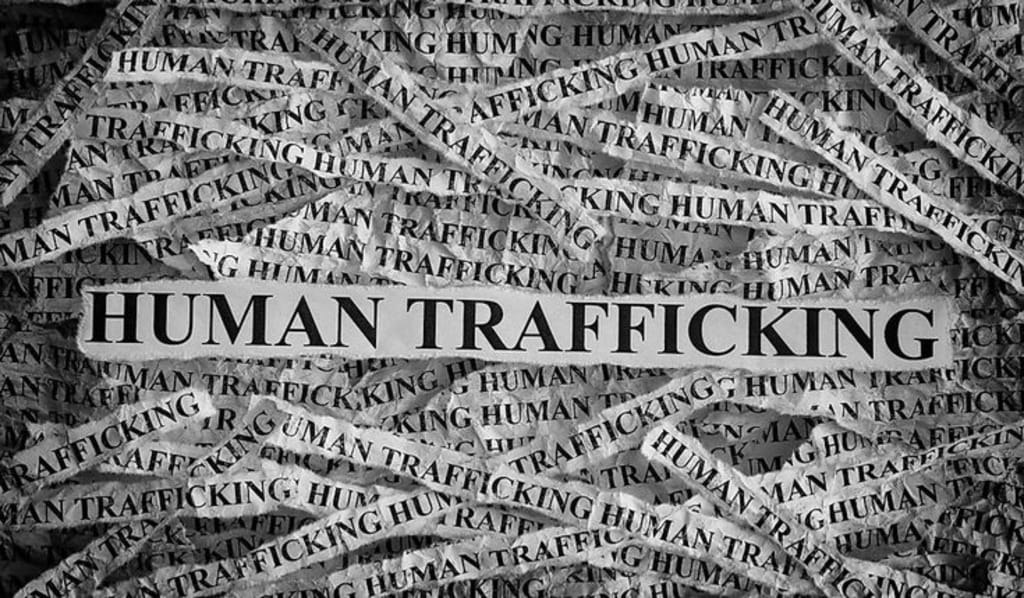Human Trafficking: The Dark Side of Modern Slavery
Unveiling the Global Crisis of Exploitation and Injustice

Introduction
Human trafficking, often referred to as modern slavery, is a grave and pervasive violation of human rights affecting millions worldwide. This illicit trade, involving the exploitation of individuals through force, fraud, or coercion, generates billions of dollars in profit each year while causing immense suffering. Despite international efforts to combat it, human trafficking persists as a hidden yet rampant crime, transcending borders and societal boundaries. This article delves into the multifaceted dimensions of human trafficking, exploring its causes, manifestations, and the global initiatives aimed at eradicating this heinous practice.
Understanding Human Trafficking
Human trafficking is defined by the United Nations as the recruitment, transportation, transfer, harboring, or receipt of persons by means of threat, force, coercion, abduction, fraud, deception, abuse of power, or exploitation. The primary purposes of trafficking include forced labor, sexual exploitation, and involuntary servitude. Victims are often lured with false promises of employment, education, or a better life, only to find themselves trapped in a cycle of abuse and exploitation.
The International Labour Organization (ILO) estimates that over 40 million people are victims of modern slavery, with 25 million in forced labor and 15 million in forced marriages. Women and girls are disproportionately affected, accounting for 71% of trafficking victims, primarily driven by sexual exploitation and forced labor in domestic work, agriculture, and manufacturing.
Causes and Contributing Factors
Several factors contribute to the persistence of human trafficking, including poverty, lack of education, and political instability. Economic hardship and limited opportunities often make individuals vulnerable to traffickers who prey on their desperation. In regions affected by conflict or natural disasters, displacement and social disruption create fertile ground for traffickers to exploit vulnerable populations.
Moreover, the demand for cheap labor and commercial sex fuels the trafficking industry. In many cases, traffickers capitalize on systemic inequalities and weak legal frameworks that fail to protect vulnerable groups. Corruption and complicity among law enforcement and government officials further exacerbate the problem, allowing traffickers to operate with impunity.
Forms of Human Trafficking
Human trafficking manifests in various forms, each with its unique dynamics and challenges. The most prevalent forms include:
Sex Trafficking: Victims, predominantly women and girls, are coerced or forced into the commercial sex industry. They are often subjected to physical and psychological abuse, with traffickers employing tactics such as threats, manipulation, and confinement to maintain control. This form of trafficking is rampant in both developed and developing countries, facilitated by underground networks and the proliferation of online platforms.
Labor Trafficking: This involves the exploitation of individuals for labor through force, fraud, or coercion. Victims are forced to work in harsh conditions with little or no pay, often in industries such as agriculture, construction, manufacturing, and domestic work. Migrant workers are particularly vulnerable, as they may lack legal protections and face language barriers.
Child Trafficking: Children are trafficked for various purposes, including forced labor, sexual exploitation, and use in armed conflicts. They are often subjected to physical and emotional abuse, deprived of education, and denied basic rights. Child trafficking is a grave violation of children's rights, with long-lasting consequences for their development and well-being.
Organ Trafficking: In this less common but equally disturbing form, victims are trafficked to harvest and sell their organs. This practice poses significant ethical and health concerns, as victims are often left in dire conditions without adequate medical care.
Global Impact and Regional Trends
Human trafficking is a global issue, affecting every region of the world. However, certain regions exhibit specific trends and challenges:
Asia-Pacific: This region has the highest number of trafficking victims, driven by factors such as high population density, poverty, and migration. Countries like India, China, and Thailand are notable for their high rates of forced labor and sex trafficking.
Africa: Political instability, armed conflicts, and economic challenges contribute to widespread trafficking in Africa. Victims are often trafficked for labor in agriculture, mining, and domestic work, with countries like Nigeria and South Africa being major hotspots.
Europe: Europe experiences significant cross-border trafficking, with victims originating from Eastern Europe and the Balkans. Western Europe is a major destination for sex trafficking and forced labor, facilitated by organized crime networks.
Americas: In North and South America, trafficking is prevalent for both sex and labor exploitation. The United States, Mexico, and Brazil are key areas of concern, with complex dynamics involving domestic and transnational trafficking.
Efforts to Combat Human Trafficking
Combating human trafficking requires a multifaceted and coordinated approach involving governments, international organizations, civil society, and the private sector. Key strategies include:
Legal Frameworks and Enforcement: Strengthening legal frameworks to criminalize trafficking and protect victims is essential. This includes ratifying international conventions such as the UN Protocol to Prevent, Suppress and Punish Trafficking in Persons (Palermo Protocol) and enacting robust national laws. Effective law enforcement and judicial processes are crucial to ensure traffickers are prosecuted and victims receive justice.
Victim Support and Protection: Providing comprehensive support services to trafficking victims is vital for their recovery and reintegration. This includes access to healthcare, psychological support, legal assistance, and safe housing. Victim protection programs must be designed to address the unique needs of trafficking survivors and prevent re-victimization.
Prevention and Awareness: Raising awareness about human trafficking and its warning signs is critical in preventing exploitation. Public education campaigns, community outreach, and training for frontline professionals can help identify and support potential victims. Addressing root causes such as poverty, inequality, and lack of education is also key to reducing vulnerability.
International Cooperation: Human trafficking is a transnational crime that requires international collaboration. Countries must work together to share intelligence, coordinate law enforcement efforts, and support cross-border initiatives. International organizations like the United Nations, Interpol, and the International Organization for Migration (IOM) play crucial roles in facilitating cooperation and providing technical assistance.
Private Sector Involvement: Businesses and corporations have a role to play in combating trafficking by ensuring their supply chains are free from forced labor and exploitation. Implementing ethical sourcing practices, conducting due diligence, and partnering with anti-trafficking organizations can help address the demand side of trafficking.
Case Studies and Success Stories
Several notable cases highlight both the challenges and successes in the fight against human trafficking:
Operation Cross Country: Conducted by the FBI in the United States, this initiative focuses on rescuing children from sex trafficking and apprehending perpetrators. Since its inception in 2008, it has led to the recovery of hundreds of victims and the arrest of numerous traffickers.
The Blue Heart Campaign: Launched by the United Nations Office on Drugs and Crime (UNODC), this global awareness campaign aims to inspire action against human trafficking and support victims. The campaign uses the symbol of a blue heart to represent the sadness of trafficking victims and the cold-heartedness of traffickers.
The Global Slavery Index: Published by the Walk Free Foundation, this comprehensive report provides data on the prevalence of modern slavery and evaluates government responses. The index has been instrumental in raising awareness and driving policy changes worldwide.
Conclusion
Human trafficking, the dark side of modern slavery, remains one of the most pressing human rights issues of our time. Its pervasive nature and devastating impact on individuals and communities call for a concerted global effort to eradicate this heinous crime. By strengthening legal frameworks, supporting victims, raising awareness, and fostering international cooperation, we can work towards a world where human trafficking is no longer a reality. It is imperative that we continue to shine a light on this hidden crime and take decisive action to protect the most vulnerable among us.
Stay safe brothers and sisters...........
About the Creator
Kobra
"Enter the dark and twisted world of the unknown I lead you through the shadows on a journey into the depths of the unknown."
"Uncovering darkness"
Enjoyed the story? Support the Creator.
Subscribe for free to receive all their stories in your feed. You could also pledge your support or give them a one-off tip, letting them know you appreciate their work.






Comments
There are no comments for this story
Be the first to respond and start the conversation.